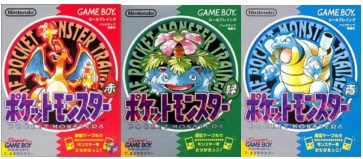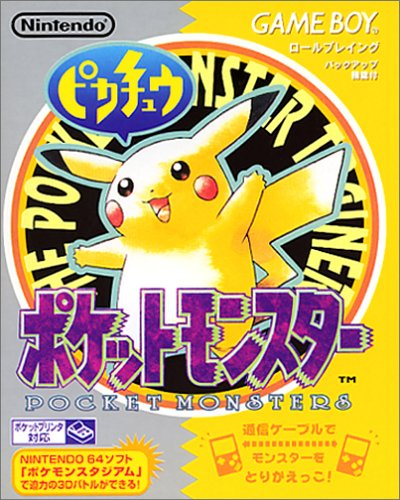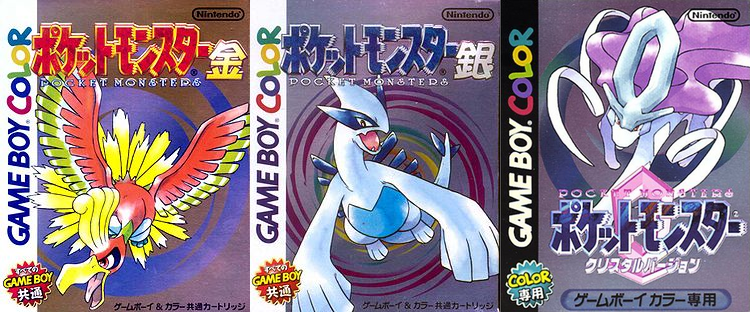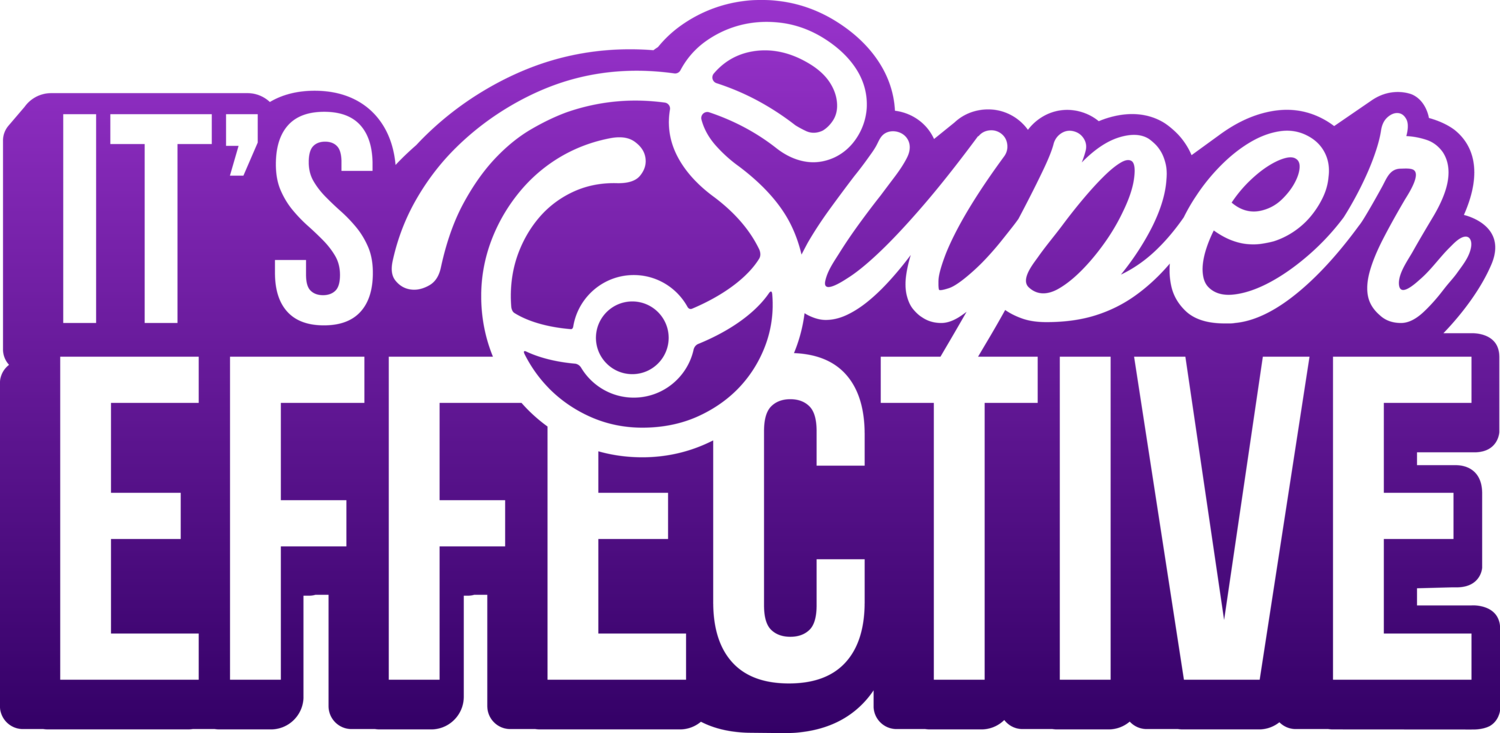Pokemon Concept Corner: A retrospective
/Well, readers, here we are. Less than two weeks away from Black and White's US and european releases. And so, this will be the final episdoe of Concept Corner before the beginning of "Concept Corner Monochrome", my Black & White miniseries. With that in mind, this seemed like a good time to stop looking ahead in anticipation for a few minutes, and look into the past a bit. I know this deviates from the course of what Concept Corner usually consists of, but this seemed like a good thing to do, in light of what's coming soon.
For those of you who don't know, a retrospective is, in the context of video games, a look back at the installments in the franchise from the beginning until now. In this particular retrospective, we'll mainly be looking at the prominant themes of each generations, the story, and the characters. I've never done anything like this before, so excuse any imperfection in how I arrange and present things here. We'll only be covering the main installments in the series today, but spinoffs might be touched on some time in the future. So, for now, let's set our time machine 16 years ago, to where it all began...
 Red and Blue(and green, too)
Red and Blue(and green, too)
Ah yes, the originals, the classics. The sensational swan-song to the original Game Boy.
In Japan, the original games to come out were Red and Green. Later, Blue was released, holding some small technical updates that would be used in the international adaptations of the games, Red and Blue.
The story of R/B/G was a simple one; you play a 10 year-old trainer setting out on a mission given to you by professor Oak, while also training and fighting to become the Pokemon master. You were given your choice of starter, and were armed with nothing but your own natural ability as a trainer. Despite the extremely minimal story of the games, there was an underlying plot to be found in some parts, mainly in the mansion on Cinnibar Island. Here, through several books laying around the mansion, you would find the backstory of Mewtwo, who you would eventually face, as well as a bit of backstory for Blaine, who headed the expedition to find and capture Mew.
While the important characters in these games were few, they were important nonetheless. Gary was a fantastic rival, who made us hate him and want to beat him with every word he spoke. Giovanni made for a good villain as the head of Team Rocket, and provided a very good plot twist near the end of the game.
Throughout the game, the atmosphere of Kanto was thick with competition. EVERYONE wanted to be the Pokemon, and was confident enough to be sure they could make it. Even the people in towns and cities throughout the game had things to say about the Pokemon league, or Pokemon in general. This will become less prominant as we continue on through the series, as some of the competition mentality fades away and becomes replaced by more and more emphasis on story.
 Pokemon Yellow
Pokemon Yellow
Pokemon Yellow warrants its own section only briefly. The game was mostly the same, except for a few small but important changes to how the story was played out. The game had a few new elements added to it to make it seem more like the anime. First and foremost, of course, is that your only starter option in the game is Pikachu. Your rival gets an Eevee, a slightly vauger refference to Gary's Eevee in the show, first seen in the final Orange Islands episode.
The adaptations didn't end there, however. In yellow, all three starters were avalible at different points in the game, all in ways simillar to how Ash obtained them in the anime. Bulbasaur is given to you by a girl living in cerulean city, assumed to be Melanie, the girl who gives Ash his Bulbasaur in the anime. Charmander is given to you on route 24 by a trainer who no longer wants it, as simmilar to how it happens in the anime, and Squirtle is given to you by a police officer in Vermillion City, ala Squirtle Squad Squirtle from the anime, saying that the creature had been a big troublemaker throughout the town. Also notable are the inclusion of Jessie and James, who you fight as minibosses a few times throughout the game.
 Gold, Silver, and Crystal
Gold, Silver, and Crystal
The second generation of Pokemon was incredible. A whole new region, with 100 new critters to get your hands on, plus acess to Kanto once you've beaten the league.
Gold and Silver's story was much like that of the first generation of games, in that it was minimal and told mostly through optional conversations and exploration. The backstory of Lugia and Ho-oh, as I've touched upon in the past, go like this:
Lugia and Ho-oh had once sat atop twin towers in Ecruteak City, the Brass and Tin towers, until one tower was burnt down. Lugia, who had dwelled in that tower, flew away, seeking refuge in the Whirl Islands, it's original home before the towers were built. Ho-oh, who watched this happen from the Tin tower, stayed in Ecruteak, to watch over the remnants of it's brother's home.
In Crystal, however, the story became more directly related to your actions in teh game, through the character Eusine. Eusine is first seen in the burnt remnants of tjhe Brass Tower, and says he is investigating the legends of the legendary dogs who sleep inside the tower, spesifically Suicune. He serves as a plot provider throughout the game, explaining what Suicune is, and acting as your rival in catching it.
In all three games, Team Rocket is back, under the command of four "admins" attempting to continue the orginization's legacy and find Giovanni. Their involvement in the plot is small, high points being the takeover of the lake of rage and the Goldenrod radio tower.
Besides Eusine in Crystal, important characters(in all three games) included Professor Elm, who aided you much more than Oak in gen 1, and Silver, the rival of the game. Silver is a more well-developed character than Gary, going from being a petty thief in the beginning of the game to realizing the error of his ways and trying to better himself at the end. Unlike closed-minded, snooty Gary, Silver learned something from the people he met in his journey. Also worth noting is Lance, simmilar to Giovanni in that you don't really know who he his until the end. This becomes a trend, and somewhat predictable by gen 4.
The atmosphere in Johto is a bit more well-developed than Kanto. There are more people who seem to have lives of their own outside battling, and you get a sense of a much larger community in almost all the towns. There's more emphasis on exploration, egged on by both the novelty of a new region and the ability to go to Kanto once Lance has been dethroned.
There wasn't much in the way of changes to gameplay in gen 2, outside of the catching opprotunities provided by the introduction of the day/night cycle. Besides that, the main additions seem to be story-based, making it clear that this continues three years after the end of the gen 1 games. But then came generation 3, and things got a lot different...
 Ruby, Sapphire, and Emerald
Ruby, Sapphire, and Emerald
When Ruby and Sapphire came out in 2003, it meant a lot of changes for the Pokemon universe. Right off the bat, this new region had 135 new pokemon, most of those from previous games being found in the seas, caves, and safari zone. Also new was a slew of different enviroments, from the volcanic Mt. Chimeny, to the ash-covered route 113, to the desert of route 111 and the underwater caverns of the sea. The biggest addition, however, was the double battle system. This changed the way we strategize and plan our teams forever, just as the triple and rotation battle systems in B/W will undoubtedly do all over again.
The story of R/S/E was considerably denser than the games before it, and contained a somewhat different origin story for your character. Having just moved into the small town of Littleroot in Hoenn, your character decides to take up the pokedex mission and league challenge in an attempt to find a place in his new world. Through this, he meets Proffessor Birch, as well as the professor's son/daughter(whichever character you don't pick). Along the journey, you get entangled in the plots of two orginizations: Team Magma and Team Aqua.
Let me take a moment here to talk about Aqua and Magma, and more spesifically their leaders, Maxie and Archie. Many people have scoffed at what these two want to do to the world; Maxie wants to expand landmass across the whole world, while Archie wants to cover it in sea. I, however, disagree with those who think these two characters to be morons, and here's why: These two men both command masterful terrorist groups that are tenacious and rutheless in fullfilling their missions. They suceed in uncovering two slumbering legendary pokemon, for Arceus' sake! They have to be doing something right. So no, Archie and Maxie aren't idiots. They're crazy masterminds, and deserve more credit than they get.
Now, where were we? Oh yes, characters. There's May/Brendan, who are very different rivals than what we've seen before, making sure to help you out whenever they can, do to the fact that the two of you are, essentially, collueages, fullfilling the same goal for the same person.. Then there's Wally, who pops up as a rival as well, near the end of victory road. Unfortunately, he doesn't serve much purpose outside of that, which seems like a wasted opprotunity for a good character. There's also Steven, who supports you from the shadows now and again, even teaming up with you in emerald.
The story is mostly identical in all three games. The main difference is the inclusion of Rayquaza in Emerald's plot, although honestly, he issn't worth much, just to yell at Groudon and Kyogre to stop fighting. After that, off to the league, same ol', same ol'.
The themes in this generation are a bit different. Like gen 2, there are many people with their own lives in Hoenn, from the triathalites on the bike path to the generous citizens of Sootopolis City. As I've noted in one of my earlier articles, there's also an undertone of coexistence with nature throughout the region, which is supported by the fact that the main legendaries, Groudon and Kyogre, are very nature-based; you coexist, or you get out.
One final note is the introduction of Pokemon contests. This minigame is almost like an alternate gym challenge in Ruby/Sapphire(less so in Emerald, where all the contest levels can be played in one building), as well as providing an objective for May and Dawn in the anime. We see more of contests in generation 4, of course. And SPEAKING of generation 4...
 Diamond, Pearl, and Platinum
Diamond, Pearl, and Platinum
When Diamond and Pearl first came out in Japan, we all rushed to youtube to see the first gameplay videos that came up. And boy, did we ever like what we saw. Diamond and Pearl boasted fixed-camera 3D graphics(sometimes called 2.5D), the huge Sinnoh region, and 107 new Pokemon to get your hands on. Additional features were the extremely handy Poketch, the expansion of Pokemon contests, and a larger story.
In D/P/Pt, your character, along with your rival, become part of the never-ending pokedex mission almost by accident, catching Prof. Rowan's eye, and being asked by him to aid him once it's obvious you're chosen Pokemon has bonded with you. From there it's the normal gym fighting for a little while, and then in comes Team Galactic.
In Diamond and Pearl, Cyrus, head of Team Galactic, wanted to obtain either Dialga or Palkia to recreate the world. In Diamond, he planned to use Dialga to rewrite time as he saw fit. In Pearl, he wanted to use Palkia to reshape the world into a utopia, with him as king. To do this, he sent his three underlings, Mars, Jupiter, and Saturn, to get the legendary lake trio, who's powers he needed to open a way to the legendary Pokemon.
In Platinum, things went a little different. Cyrus wished to harness the power of Giratina, who can be thought of as the diety of chaos, or antimatter. To do this, however, Cyrus first had to bring both Dialga and Palkia to spear pillar, to create the power surge nessecary to open a portal into Giratina's home, the distortion world. Cyrus' plan was different than in Diamond and Pearl, as well. Instead of ruling the world as a mortal, he wanted to become like a god. He planned to do this by ripping the world of its spirit, a process which he thought could be done by seperating the Distortion world's ties to the Pokemon world. Then he would be able to take over whatever he saw fit. Luckily, after you defeat him he seems to lose his motivation, and walks off.
Talking characters, Barry's a decent rival, hitting a chord somewhere between Brendan/May and Gary. He's your friend, and supports you, but is also determined to win, and become the champion. Cynthia is a good support-from-the-shadows type of character, guiding you through some later parts of the game. In Platinum there's Looker, a secret agent investigating Team Galactic, but his only purpose seems to be to give us someone to hate. And if that's what Nintendo was going for, good job!
There weren't many changes to gameplay here. Outside of super contests and the return of the day/night cycle, everything was pretty much the same. The ability to battle online was, of course fantastic, but didn't yield anything completely new. That's not nessecarilly a bad thing, however, because it keeps us hungry for more.
The atmosphere of Sinnoh is one that dictates to you as you go throughout the region. Everyone and everything seems to have a story, from the characters you team up with at various points to many towns and cities. Of course, there's still the battle mentality, but it seems a bit more subdued here. The way the games played through left us all satisfied for a long time, but eagar for more.
...And VERY soon, more we shall have. By the time I next sit down to write Concept Corner, Black and White will be out, and I will be typing with one hand as I level-grind my Snivy with the other.
Next week begins the Monochrome series here at Concept Corner. We'll be looking at the starters, the first big choice to be made in any Pokemon game, as well as the Pidgeys and Rattatas of generation 5.
Positively giggling with B/W anticipation,
this is IatosHaunted, signing out~
Concept Corner is (c) jay Petrequin, 2011
